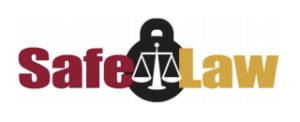Executive Summary
Communication is the key to good client relationships, and good client relationships are a key to risk management. The ethics rules require you to tell clients what they need to know. Best practices call for documenting client communications, particularly the ones that confirm your scope of authority and the instructions you’ve been given.
It’s About People
Lawyers rarely solve purely “legal” problems. They solve people’s problems. Treat your clients as people – not case files or piggy banks – and communicate with them regularly.
Year in and year out, the number one client complaint about their lawyer is poor communication. Their phone calls aren’t returned. They don’t know what’s happening with their case. Some clients get so frustrated they file an ethics grievance or malpractice suit.
The situation might have been avoided with a simple phone call or text message.
![]()
Alta Pro Practice Pointers
- Create a firm culture of communication. It does little good to tell your staff to communicate with clients if you’re bad at it yourself. Improve your skills by asking open-ended questions, initiating crucial conversations, and doing more listening than talking.
- Put clients first. Make sure clients are informed about significant decisions. This requires input from all members of the firm working on the case— not just the responsible attorney.
- Develop guidelines on client communication. Address how often clients are contacted and what events will trigger contact. Create templates for status reports and client updates. Use case activity logs. Audit files to ensure consistent communication.
- Manage client expectations. Ask how the client prefers to be contacted. By phone, email or text? How often? Would they rather be contacted at home, work or neither? Create a communication protocol for each file.
- Know the rules. Rule 1.4 of the ABA Model Rules of Professional Conduct says a lawyer shall: (1) promptly inform clients of any decision or circumstance that requires informed consent, (2) consult with clients about the means by which to accomplish their objectives, (3) keep clients reasonably informed about their case status, (4) promptly comply with reasonable requests for information, and (5) consult with clients about relevant limitations on your conduct. The rule also requires you to explain matters sufficiently so that clients can make good decisions.
- Don’t bill for every call. Client communication is a professional responsibility, not a profit center. Use technology to contact clients quickly and efficiently. Let some conversations go unbilled. Don’t discourage clients from contacting you if they have a problem.
- Don’t sit on bad news. It will only get worse over time. Grit your teeth, pick up the phone and make the call. Clients don’t like surprises. Keep them in the loop. Tell them candidly how the case is going. That way, they won’t be shocked later.
- Confirm your authority to settle and make key decisions in writing. This lessens the risk of misunderstandings.
- Deal quickly with communication breakdowns. This is best done face-to-face. Afterwards, write a summary of what was discussed and decided.
- Document your file. This covers yourself and keeps every member of the legal team on the same page so they can best help the client. Keep your notes concise and professional. Remember that your client may read them someday.
The Bottom Line: Return your phone calls. When in doubt, communicate.
What’s Next?
Have a question about client communication? Ask the Risk Pro!
Want some pointers on confidentiality and attorney-client privilege? Click here!
Heads up!
This information is intended for informative purposes for members of Alta Pro Lawyers Risk Purchasing Group. It is not intended as legal advice. Lawyers should always refer to local and state rules and statutes for applicable standards and rules. These guidelines are designed to help lawyers avoid professional liability claims and are not intended for any other purpose. No legal or fiduciary relationship is intended to be created by receipt of this material.
















